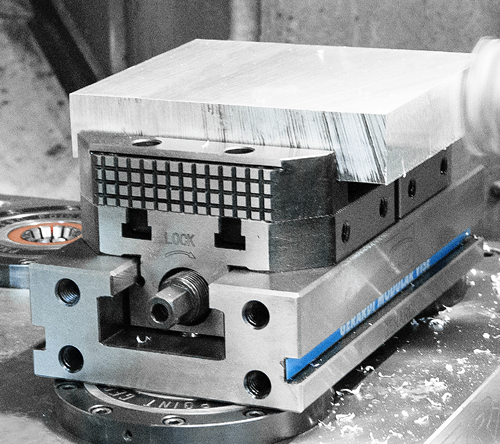Don't have an account?
Creating an account has many benefits: check out faster, keep more than one address, track orders and more.
Or
Checkout as a Guest
Place your order without creating an account for extra convenience.
An Expert’s Guide to Different Types of Vices
Contents
Introduction to different types of machine vices
When it comes to precision and stability in the workshop, a good vice is indispensable. Whether you're working with metal, wood, or plastic, selecting the right type of vice can make all the difference in accuracy and efficiency. This expert guide explores various types of vices, their key components, essential spare parts, and a review of some of the leading brands in the market today.
Type of Vices
Machine Vices
Used in milling machines and CNC setups, machine vices are designed to hold workpieces rigidly during machining. They offer high clamping force and precision alignment, often incorporating swivel bases and tilting features for multi-angle work.
Self-Centring Vices
Ideal for symmetrical machining, self-centring vices automatically align the workpiece to the centre of the vice. These are frequently used in CNC machines where repetitive, centred work is required.
Bench Vices
Common in general workshops, bench vices are mounted to workbenches and used for tasks like filing, sawing, and hammering. They come in metal or woodworking variants and are known for their durability.
Pin Vices
Pin vices are small, handheld tools used to hold fine objects such as wires, pins, and miniature drill bits. They're a go-to for jewellers, model makers, and electronics technicians.
Tool Makers Vices
Precision-ground for flatness and squareness, tool makers vices are perfect for inspection, EDM, and light milling tasks. These vices are often made from hardened steel and are used in tool rooms.
Drill Press Vices
Specifically designed for drill presses, these vices securely hold the workpiece in place during drilling operations. They usually feature horizontal grooves or V-slots for holding round or irregular stock.
Key Components of a Vice
Regardless of type, most vices share the following basic components:
-
Jaws: The gripping faces of the vice. One is fixed, and the other is movable. They can be smooth or serrated depending on the application.
-
Spindle: A threaded screw that moves the movable jaw when turned.
-
Handle: Used to rotate the spindle and apply clamping force.
-
Vice Body: The main structure, usually made from cast iron or steel, that houses all components.
Some vices may also include:
-
Swivel Base: Allows the vice to rotate horizontally for angled operations.
-
Workstops: Used in repeatable positioning for production jobs.
Typical Spare Parts and Accessories
To extend the life and performance of a vice, various spares and accessories are available:
- Spare Vice Jaw Plates: These replace worn-out or damaged jaw surfaces. Options include soft, hard, serrated, and V-jaw plates.
- Swivel Bases: Allow added flexibility; often offered as detachable accessories.
- Workstops: Precision stops that aid in repeatability for high-volume machining.
Vice Brand Reviews
Gerardi
An industry leader in precision vices, Gerardi vices are known for their modular design and adaptability. They offer a wide range of accessories and are popular in CNC applications. Their self-centring and zero-point clamping systems stand out for repeatable accuracy.
Pros: High precision, modularity, durable build
Cons: Premium pricing
Bison
Bison (Bison-Bial) is well-regarded for its robust bench and machine vices. Polish-made, these vices strike a good balance between quality and cost, suitable for both workshops and light industrial use.
Pros: Durable, cost-effective, widely available
Cons: Slightly lower precision than high-end brands
Schunk
Schunk vices are synonymous with high-end automation and clamping systems. These German-engineered tools are staples in robotic and automated CNC environments, offering high repeatability and minimal deflection.
Pros: Advanced technology, great for automation
Cons: Expensive, overkill for basic setups
Autowell
Autowell offers a strong range of hydraulic and pneumatic vices designed for automation and fast setups. Particularly popular in Asian markets, Autowell products emphasize efficiency and speed.
Pros: Excellent for high-speed production, competitive pricing
Cons: Less well-known globally, fewer modular options
Final Thoughts
Whether you're fabricating one-off components or running a production line, investing in the right type of vice can streamline your workflow and enhance accuracy. Understanding the types, parts, spares, and brands will help you make the right decision for your application.
Looking for help choosing a vice for your setup? Please contact our technical team on 01924 869 615 or email sales@cutwel.net.

